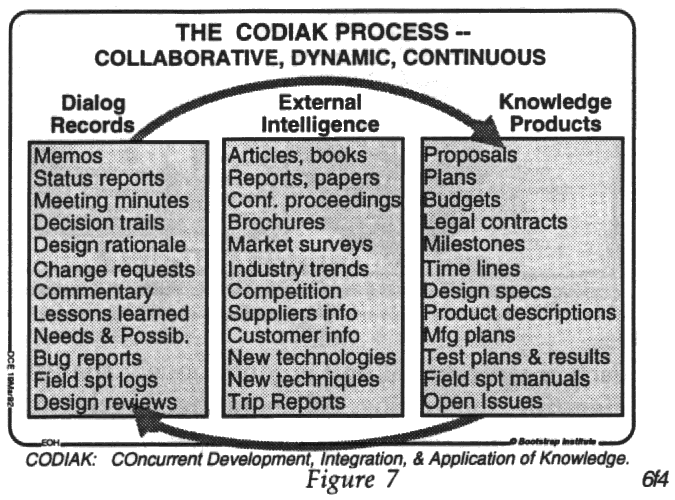Beyond blogs and wikis
I really like David Berlind's post IBM's Suitor asks how you share documents. Wrong question, right time (May 2, 2006). David makes a great points including: "Think about freeing your knowledge. Then worry about the format (after your thinking leads you to regular document land)." But I think David edges close to a similar problem in characterizing blogs vs. wiki's - particularly with respect to Traction and other products which purposefully blur the boundaries.
David says:
For all intents and purposes, wikis are blogs that have exchanged the diary-like posting format for the ability to let multiple users edit the same piece of content (aka: collaborating on knowledge). In other words, instead of sending a editable document around, host it as a Web page that anybody with access to the wiki can edit. Wikis also support RSS (notify me when this wiki page changes). Revisions can be tracked and restored. Content can be edited with user-friendly WYSIWYG tools. Traditional content management systems, look out
Traction TeamPage and some blog products support collaborative editing of posts using both WYSIWYG tools and RSS syndication. SocialText blurs the lines starting from a wiki model by adding features that make it useable as blog.
Traction starts from the blog end of the spectrum (actually it started from link Doug Engelbart's concept of a hypertext Journal) in that it records collaboration over time. But, the knowledge product of the collaboration - represented as a web of editable pages, office or CAD files - can be recorded and versioned in Traction along with the external intelligence and internal dialog about the creation and evolution of the product. The knowledge product can also reside in an external repository and become the subject of dialog using links from Traction. Both the dialog and knowledge product are typically created and edited as a purposeful group activity.
Traction maintains a full audit trail (of labels added/removed as well as edits), built in WebDAV versioning of files attached to posts, and integrated WebDAV web folders with simple linear file versioning (see eContent's 2004 story). I agree that this is a disruptive alternative to high priced and high complexity content management systems, because that's what customers are telling us - integrated WebDAV was funded by a customer.
Traction's Release 3.7 adds MediaWiki style difference display and one click revision support to Traction's content and action audit trail.
I believe that any successful challenge to the document centric collaboration model will need to support collaboration in place (group editing of the same page); collaboration over time (commentary and conversation in context); and real-time collaboration (IM and syndicated notification).
All three modes of interaction can work together effectively using RSS/Atom for syndication, IM for notification, syndication search (like Technorati), collaborative tagging, and a compatible framework for permissioned access - which is critical for business use, and important for groups of friends, family and other associations. It's the combination of ingredients that offers the hope for collaborative systems that scale like the web.

Traction Software's products are based on a model of group group editing in place combined with group collaboration over time that pre-dates blogs and Wiki's by over 40 years - see Blog50: Traction Roots - Doug Engelbart. For more information on Douglas Engelbart, the Godfather of effective collaboration, see Doug's Wikipedia page.
For notes from John Blossom's lively panel on blogs, wiki's and IM for collaboration see Blog73: Personal Knowledge Management: Building Actionable Content from Collaborative Publishing and John's Personal Knowledge Management Tools Ready for Enterprise Use.
For 60 years of history in four one paragraph steps, see Blog106: The Evolution of Personal Knowledge Management
See also Blog384: Enterprise 2.0 - Letting hypertext out of its box.
 I18N ERROR: @tsiskin#footer_RSS_Feed
I18N ERROR: @tsiskin#footer_RSS_Feed